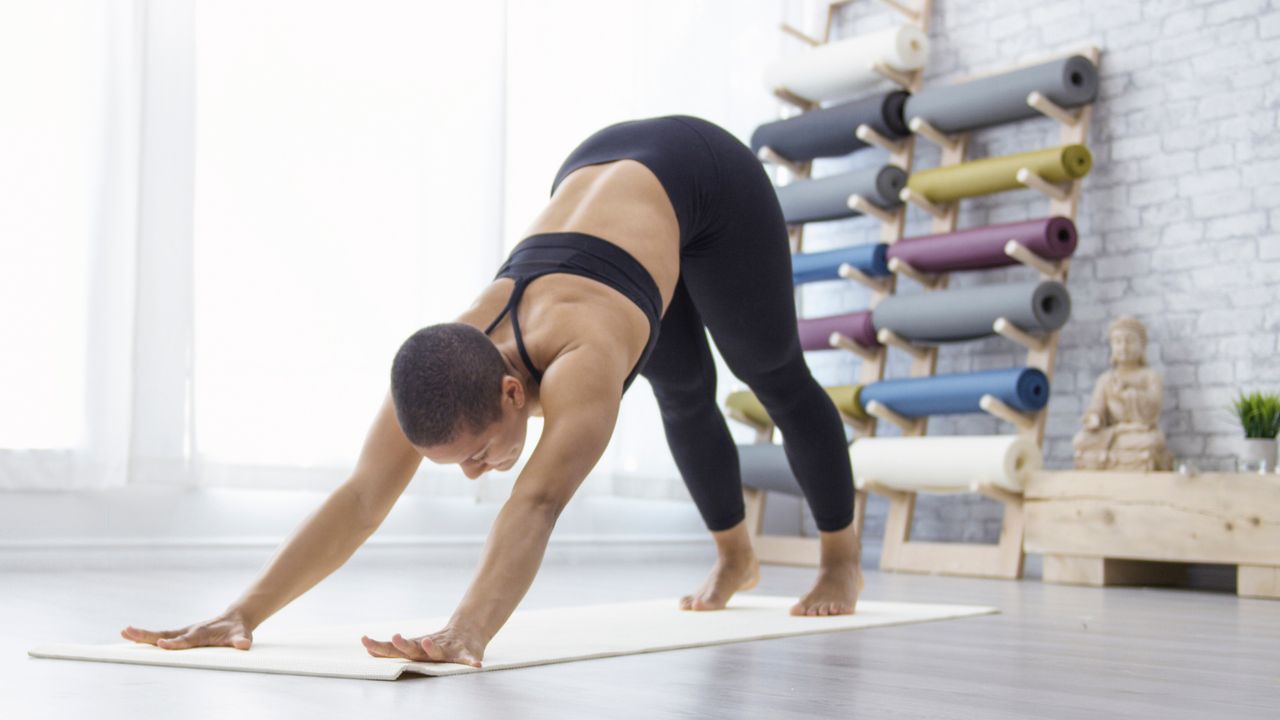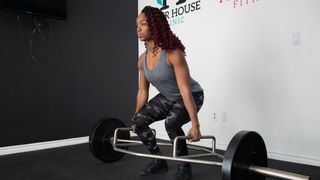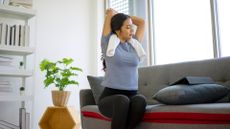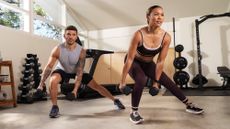This easy 30-minute workout will reverse the damage of sitting down too long
This half-hour no-kit workout will help you strengthen your core and back muscles


If the pandemic means you've been spending a lot more time at home, whether you've been working from home instead of an office or you've been sitting at home mulling over cancelled plans, you're likely to be spending more time sitting down than you would normally do.
This can be extremely harmful for your back: spending lots of time on chairs without good lumbar support, hunched over your laptop, is not a good recipe for muscle and bone health.
One study, published by Copenhagen researchers, found a "significant positive association between total sitting time (per hour) and high lower back pain intensity". The longer you sit for, the more pronounced the correlation. To relieve the pain, you need one of the best office chair entries (and perhaps one of our best posture correctors).
Fortunately, we can help. Expert PT Anna Cousins recently took over our Instagram account to walk us through a dynamic 30-minute routine designed to strengthen our back and core muscles, protecting them from the dangers of a sedentary lifestyle. Check out the full workout below:
Follow us on Instagram at @wearefitandwell
Want to follow the next IG workout live? Follow us on Instagram to get all the details on live workouts, Q&As with experts, and a selection of some of our best features, wellness advice, workouts and the latest deals on the hottest fitness kit. Don't miss out!
Why is back strength so important?
If you're getting too much back pain from spending time slumped on the sofa, or hunched over your keyboard, this strength exercise routine is just what the personal trainer ordered.
A study published in the Journal of Exercise Rehabilitation examined the effect of strength training and walking exercises on the back, and found they were beneficial in improving lumbar function, helping you stand up straight, twist and walk. The exercises also reduced instances of back pain.
With yoga-inspired moves like the walking plank, Cousins' workout doesn't just improve your back, but also tightens your core. The lower back and core muscles form the "trunk" of your body, two muscle groups moving in tandem to help support almost every kind of total-body movement you can do.
Get the Fit&Well Newsletter
Start your week with achievable workout ideas, health tips and wellbeing advice in your inbox.
From lifting yourself out of a chair to boxers twisting and turning their torsos in the ring, this routine is applicable for every fitness level.
More ways to undo the damage of sitting
- Do some deadlifts
Deadlifts can be very effective for strengthening your lower back muscles and core, decreasing back pain and reversing the damage from sitting all day. This is because this exercise works the posterior chain, a big group of muscles on the back of the body.
To perform a deadlift, stand with feet shoulder-width apart and grab either dumbbells or the bar with your hands just outside your legs. Lift the weight by driving your hips forward, keeping a flat back. Slowly lower the dumbbells or bar back to starting position. Our how to deadlift with dumbbells guide can help

- Stand up
It sounds obvious, but simply standing up and moving frequently throughout the day can help to offset the negative effects of sitting down.
Set yourself a 30-minute timer on your phone and walk around the room for a minute or two, or even better, take a five minute stroll in the fresh air. Repeat the timer for the hours you’re working at your desk so that you don’t go too long without a break.
- Take a stretch break
Personal trainer Emily Williams, who is working with pain relief brand Deep Freeze, recommends doing ‘reach ups’ to help relieve muscular discomfort in the lower back. She says: “This exercise help with the transversus abdominis muscle - a muscle that reaches right across the front of the abdominal and out to the sides. Basically, it hugs the abdominals.”
To do the reach-ups, lie down on your back, with feet hip width apart. Breathe out and tilt your pelvis up.
Hold your hands straight up in the air, palms facing each other. As you breathe out pull your shoulders and your head slightly off the floor as though you are reaching up.
Hold for two seconds, then release, bringing the arms back down to the floor. Repeat this move 10 times, three to five times a day.
It’s also important to stretch out your upper back regularly – you can try the five-minute upper body stretch sequence here while seated at your desk.
Matt Evans is an experienced health and fitness journalist and is currently Fitness and Wellbeing Editor at TechRadar, covering all things exercise and nutrition on Fit&Well's tech-focused sister site. Matt originally discovered exercise through martial arts: he holds a black belt in Karate and remains a keen runner, gym-goer, and infrequent yogi. His top fitness tip? Stretch.
-
 This couch workout is a beginner-friendly way to build cardiovascular fitness and strength
This couch workout is a beginner-friendly way to build cardiovascular fitness and strengthWorkout If you’re new to exercise or returning after a break, starting with some low-impact movement can help you gradually build strength
By Maddy Biddulph Published
-
 Maximize your strength and endurance like Chris Hemsworth with this hybrid training workout from Centr
Maximize your strength and endurance like Chris Hemsworth with this hybrid training workout from CentrBurn fat, boost aerobic fitness and build lean muscle—if Hemsworth can, you can too
By Sam Rider Published
